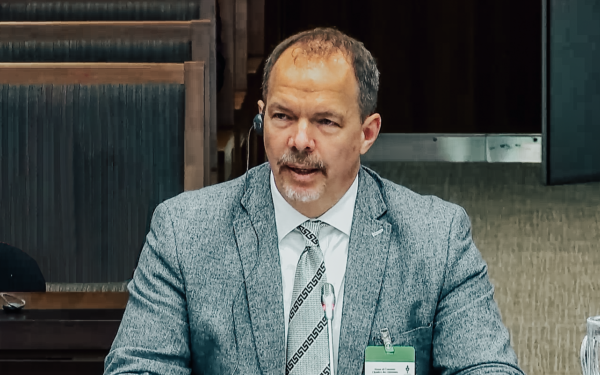CIRA’s Community Investment Program funds Canadian internet projects, addressing the digital gaps across the country. We’re especially looking for projects that benefit rural, northern and Indigenous communities.
Imagine you pay $200 monthly for home internet (and that’s on top of what you already pay for phone and cable) and still get slow or nearly no speed. This is what happens when your online access relies on satellites, even for emails to a neighbour or to access content produced in your own community. Unfortunately, this is a reality for many people in northern Canada.
The application period for CIRA’s Community Investment Program is now open and organizations can apply for a grant to support projects working to address issues like cybersecurity, digital literacy and internet infrastructure.
This year, we are especially looking for projects that benefit rural, northern and Indigenous communities in Canada.
To explore the issues around the digital divide in northern Canada, last year I talked to Madeleine Redfern, former mayor of Iqaluit and president of the Nuvujaq Society, a not-for-profit society that advocates for improved connectivity in Indigenous, northern, rural and remote regions and communities.
Infrastructure is the key to performance and cybersecurity
The capital of Nunavut, Iqaluit accounts for 25% of the territory’s population and uses 75% of the territory’s broadband. Iqaluit depends on slow satellite internet services, which hinders the territory’s economic development and government operations.
At this moment, there are no inter-connected networks in Iqaluit, which means any time anyone needs to access the internet, even locally, the traffic must connect to the satellite, which is expensive and inefficient.
Madeleine Redfern has been working with different levels of government, CIRA and the Internet Society of Canada to identify opportunities to improve the affordability and accessibility of Nunavut’s internet.
One remedy that these stakeholders have been working on is an Internet Exchange Point (IXP). An IXP is a hub where independent networks can interconnect directly to one another and improve internet performance, security and resilience in the local community. An IXP would allow networks to stay in the community improving speed and making home internet more affordable.
Madeleine says it became clear an Internet Exchange Point was one option that could provide our community significant value.
“We live in a digital world and not having those digital tools seriously limits our region and our ability to keep up and be part of innovative solutions. There’s a tremendous amount of research that is done in the Arctic. There could be so much more if we had greater digital access and analysis.” says Redfern.
Jacques Latour, CIRA’s chief technology officer, also notes the cybersecurity value of local internet infrastructure. “One of the biggest benefits, from my perspective, is security. Many people living in these communities do not regularly update their software and devices… it’s costly and takes too long, so they make the choice to skip an update. This puts them at extreme risk for bad actors wishing to do them harm online.”
That’s why projects like IXPs and other initiatives to help improve internet infrastructure and access in the Arctic region will have great social impact for the community.
Funding available through CIRA’s Community Investment Program
CIRA’s Community Investment Program funds innovative projects doing good things for and through the Canadian internet. Infrastructure and cybersecurity are two of the key funding areas, and CIRA is especially looking for projects developing connectivity services for regional, rural, remote and/or underserved communities.
Since 2014, CIRA has supported 151 internet projects across the country. Here are a few projects CIRA has funded focused on northern Canada:
- Digital literacy in Northwest Territories – The Gwich’in Tribal Council and University of Alberta researchers created resources to engage and support citizen decision-making regarding broadband deployment in Northwest Territories.
- Mobile mesh networking – Many remote Indigenous communities have limited access to internet services and this infrastructure project piloted a mesh networking platform for the community of Rigolet, Nunatsiavut, Labrador.
- Technology to preserve Inuit history – The Kitikmeot Heritage Society developed an approach to cataloguing Inuit knowledge and history of the Fifth Thule Expedition in Nunavut online.
- Immersive education to remote Indigenous communities – With two-way video, Connected North led interactive sessions like field trips to museums and guest presentations from chefs, astronauts, hockey players and more. It reached Indigenous students across all three territories and northern communities in British Columbia, Alberta, Saskatchewan, Manitoba, and Ontario.
CIRA is accepting grant applications for internet projects until February 25, 2020 and we especially welcome applications representing under-served regions across the country, including Canada’s north.
Learn more about applying for a grant at www.cira.ca/grants.
Erica works in corporate communications at CIRA. Her background is in writing and community relations in the non-profit sector. She is a graduate of Carleton University’s journalism program.




